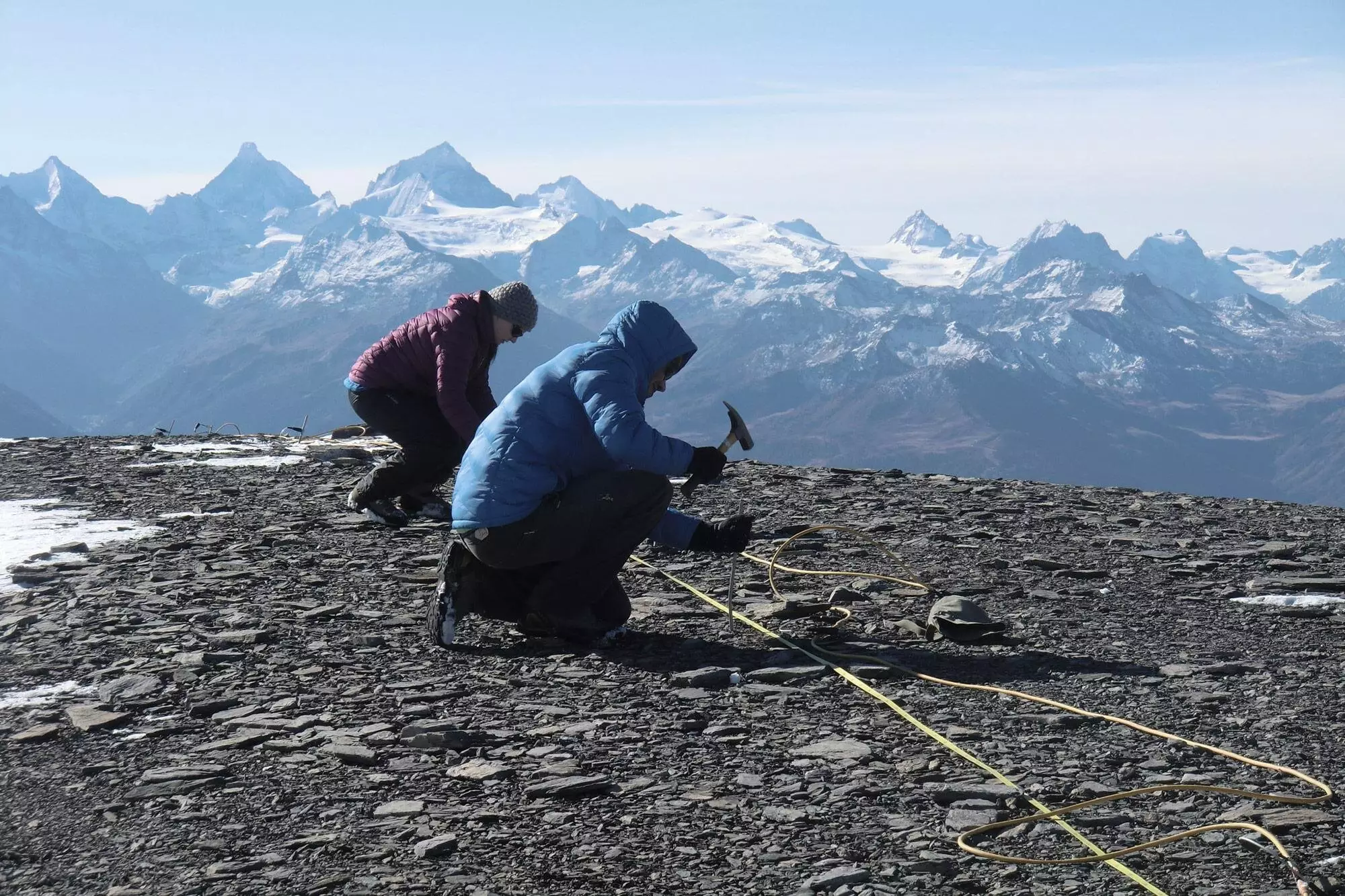The Alps, known for their stunning beauty and majestic peaks, are facing a silent threat that could have far-reaching consequences. The bedrock in these mountains is no longer permanently frozen due to the thawing of permafrost, leading to potential rockfalls and instability in the landscape. While the disappearance of glaciers is a more visible phenomenon, the underground changes occurring in the alpine bedrock are equally concerning. Researchers have been monitoring the state of permafrost in the mountains for many decades using traditional methods, but recent advancements in technology have allowed for a more comprehensive understanding of the situation.
Traditional methods of measuring ground temperatures involved drilling holes up to 100 meters deep, which was not only time-consuming but also expensive, especially at higher altitudes. The University of Fribourg has developed a non-invasive measurement method that involves passing electrical current through the ground and measuring the electrical resistivity to determine the presence of water in liquid or frozen form. This new method allows for a more accurate assessment of permafrost over larger areas, making it possible to forecast future developments with greater precision.
Analyzing the data collected from resistivity measurements is challenging, as there are numerous factors to consider in mountainous regions, such as rock characteristics and slope inclination. Researchers must also refine their models continuously to account for these variables and improve the accuracy of their predictions. Comparing the results with data from other monitoring networks, such as the Swiss Permafrost Monitoring Network, provides additional insights into the changes occurring in the Alps and helps validate the findings of the new measurement method.
Recent studies have shown that the temperatures in boreholes in the Alps have increased by approximately 1°C over the last two decades, leading to permafrost being located deeper in the ground. The resistivity measurements have also revealed a quantifiable loss of permafrost, with about 15% of the ice disappearing between 2015 and 2022. Additionally, research conducted throughout Europe indicates that a single hot summer can result in the irreversible loss of permafrost in mountainous regions, highlighting the vulnerability of these ecosystems to climate change.
By analyzing historical resistivity data, researchers can reconstruct past processes and make predictions for the future regarding the tipping point of alpine permafrost. It is believed that many areas have already reached or will soon reach this critical threshold, which could accelerate the disappearance of permafrost and lead to increased rockfalls and landslides in previously stable locations. Establishing methods to predict these tipping points early on is crucial to mitigating the potential risks associated with thawing permafrost and ensuring the long-term stability of the Alpine region.
The thawing of permafrost in the Alps poses a significant challenge that requires urgent attention and proactive measures to address. With advancements in measurement technology and data analysis, researchers are better equipped to monitor and predict the changes occurring in the mountains. By raising awareness of the potential consequences of permafrost loss and implementing strategies to adapt to these changes, we can work towards preserving the unique alpine landscape for future generations.


Leave a Reply